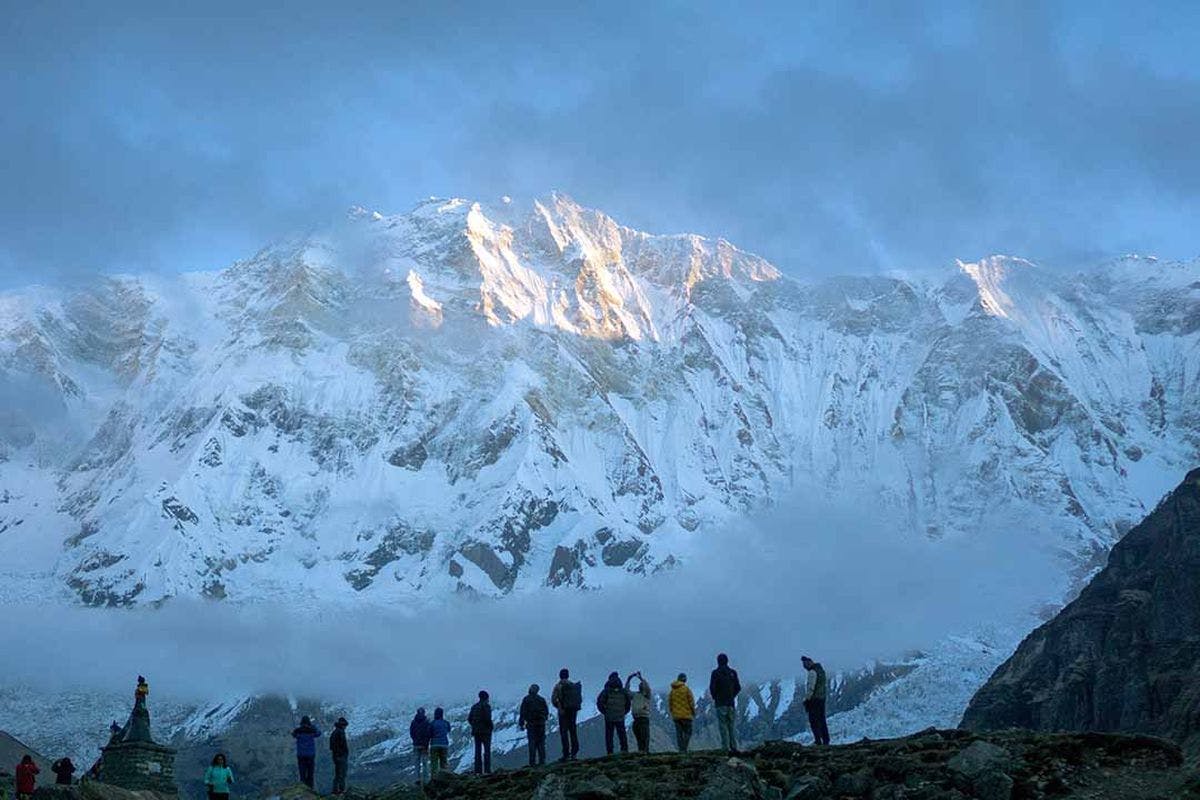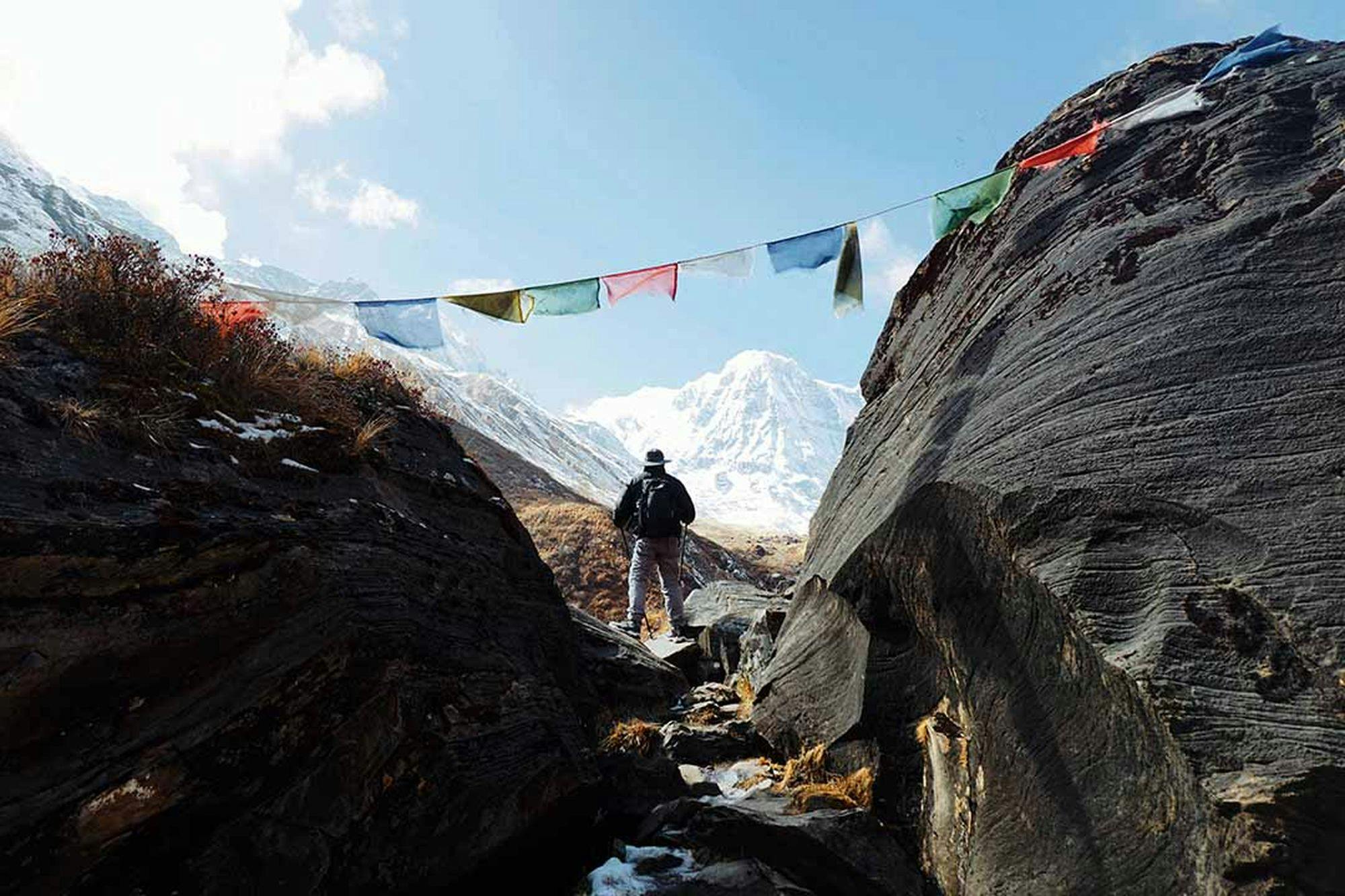

Annapurna Base Camp Trek - 16 Days
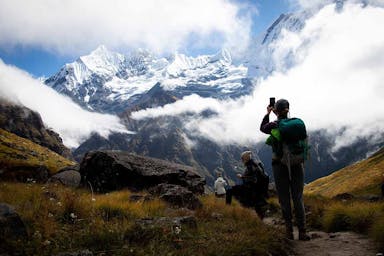
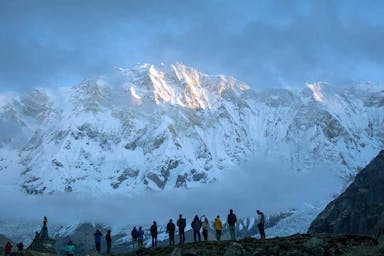
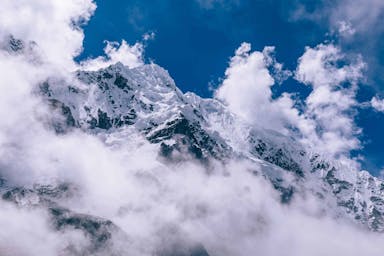
Customizable
This trip is completely customizable
Customize your trip from accommodations to gear to suit your tastes. Begin by creating or adding to a voyage. We're here to help.
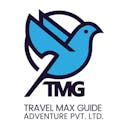
Travel Max Guide
Annapurna Region, where you step into for the Annapurna Base Camp Trek is not only one of the best regions to trek, but also the region with the best trek that you can think of after the Everest Base Camp Trek. With these, Annapurna Base Camp Trek has got all the aspects of the trek, such as hills, beauties, sub-tropical valley, glaciated alpine zone, hike, forest, sanctuary, and the base camps. What you see while trekking is the majestic scenery that will trace on your mind forever. This includes the view of Mt. Machapuchare (22,943 ft.), Mt. Dhaulagiri (26,794 ft.), and Mt. Annapurna South (26,545 ft.). These are just some of the mountains that you will see. If you think the Annapurna Base Camp Trek is about the mountains and culture, then you have thought about it rightly. But what you don’t know is its trekking trails that are easy to walk. As you reach the base camps, you will see a large number of mountains which is more than you have estimated. This could be the happiest moment for you. Another happiness is when you spend a night in these mountains. This moment can be compared to once in a lifetime experience which even the Everest Base Camp Trek fails to do.
Highlights include:
-Not only Annapurna Base Camp but also the highlights of Fishtail Mountain.
-The one and the only trek that can challenge the attractions of Everest Base Camp Trek.
-A trekking trail that will inspire you to do an observation of the cross-section of the landscape lying a distance.
Included:
Airport transfers
Accommodation in Kathmandu and Pokhara in twin sharing basis
Lodge accommodation during the trek
Breakfast at Kathmandu and Pokhara
All meals during the trek (breakfast, lunch and dinner)
National park permits and TIMS card
An English-speaking trekking guide and tour guide
Kathmandu valley sightseeing in a private vehicle
All the entrance fees during the time of Kathmandu Valley sightseeing
Not included:
Bottled beverages, tips
Items of a personal nature
Delay due to weather, natural or political problems that are out of our hand.
Anything that is not mentioned in the inclusive section
Best Price Guarantee We Price-Match

Travel Max Guide
Verified Operator
Price
Starting fromFrom$1,750.00 per person
This trip is completely customizable. Use it as your starting point to craft your perfect voyage before you book it.
Suggested Itinerary
Arrival in Kathmandu
Arrive in Kathmandu at your favorite airlines; we will be waiting for you outside the airport because you are our clients, and you have great faith in us when you are in Nepal. At the same time, we want to create an impression in you because we believe the first impression is the lasting impression that traces on the back of your mind forever. If you arrive in Kathmandu in our office time, then we would, of course, take you to our office; otherwise, we would take you to the hotel where there are attached bathrooms, TV and phone to meet your expectations. Give us a call on our mobile no if you have any problems in such a place. Order tea or coffee and breakfast, all of them are free; just give a call from your hotel room.
Moments that define this adventure

